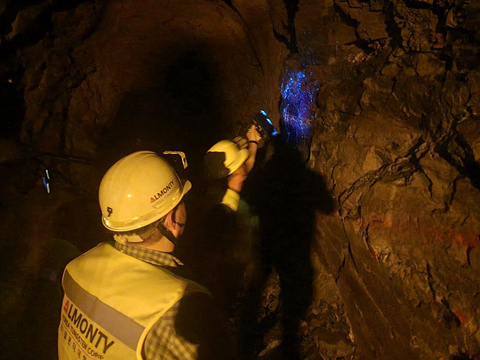Almonty Industries (TSX: AII, ASX: AII), which is closing in on first production from its Sangdong tungsten mine in South Korea later this year, says it recently hosted a delegation sent by the U.S. government. Tungsten is a rare metal used in the production of weapons, semiconductors and industrial cutting machines and the U.S. hasn’t had any domestic production of the metal since 2015.
Almonty says restarting its past-producing Sangdong mine would “significantly mitigate” the Western world’s dependence on tungsten produced in China, which accounts for over 80% of the critical mineral’s supply chain.
The Toronto-based company, which has a producing tungsten operation in Portugal, plus development projects in Spain, acquired Sangdong in 2015. Almonty plans to invest US$217 million over two phases to reopen the mine.
The first phase will average 2,300 tonnes of tungsten oxide (WO3) production annually. The second phase expansion, which includes a tungsten oxide plant, would roughly double that output.
Commissioning is targeted for late 2024, with another 12 years of ramp-up to full production. Once complete, it has the potential to produce over half of the world’s tungsten, Almonty said.
US attention
The U.S. delegation consisted of a team of four United States Geological Survey (USGS) researchers, led by the assistant chief at the National Minerals Information Center (NMIC), which plays a crucial role in gathering and analyzing data on the production and supply chain of critical minerals worldwide.
During their visit, the researchers conducted an extensive review of the development of the underground galleries at the project, the processing plant under construction, and of Almonty’s planned tungsten oxide plant.
Located in the northeastern province of Gangwon, Sangdong been a strong contributor to the economy in the post-Korean War decades, accounting for more than 50% of the country’s export revenue. The mine closed in the 1990s primarily due to low commodity prices.
The deposit is said to host one of the largest tungsten resources in the world, along with one of the highest grades. Total reserves are measured at 7.9 million tonnes averaging 0.47% tungsten oxide, for 3.7 million contained tonnes.
Sangdong mine
The fully permitted Sandong mine has a potential life of at least 90 years, but could even run for 100-plus years, CEO Lewis Black told the Korea Herald earlier this year.
The operation would also boast the highest recovery rate at 85% and the lowest cost at US$110 per tonne, which is roughly half of China’s average, the company said. According to Black, the average grade at Sangdong is 0.45-0.5% WO3, more than 2.5 times the global average, whereas the average quality of a Chinese tungsten mine is 0.18%.
In its press release this week, Almonty said further expansion of the Sangdong processing plant and the completion of the tungsten oxide plant in Yeongwol is projected to produce 4,000 tonnes of tungsten oxide annually, with a purity level of 99.99%. By comparison, global tungsten production is approximately 98,000 tons per year, about half of which is consumed in China, it cited.
Almonty stock traded 3% higher around mid-day in Toronto at 80¢ per share for a market cap of $206.9 million. The shares have traded between 42¢ and 83¢ in the past 12 months.


Be the first to comment on "Almonty nears first production at its tungsten mine in South Korea"